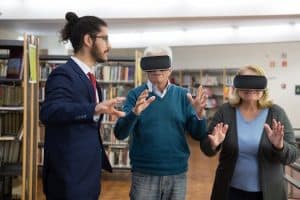Student Support: Intervention Strategies
As teachers and educators, we are constantly faced with the challenge of ensuring that all of our students receive the support they need to succeed academically and emotionally. This can be particularly challenging when we have students who require additional intervention strategies to help them reach their full potential. In this article, we will delve into the topic of student support and explore some effective intervention strategies that can make all the difference in a student’s educational journey.
Understanding Student Support
Student support refers to the resources and strategies that are put in place to assist students who may be facing academic or behavioral challenges. This support can come in various forms, such as one-on-one instruction, remedial classes, counseling, and accommodations for learning disabilities. The goal of student support is to provide students with the tools they need to overcome any obstacles that may hinder their academic progress.
The Importance of Intervention Strategies
Intervention strategies are an essential part of student support as they are designed to target specific needs and provide tailored solutions. These strategies are proactive measures that are put in place to prevent students from falling behind or facing difficulties in the classroom. By identifying and addressing potential issues early on, students can stay on track and achieve their academic goals.
Effective Intervention Strategies
1. Personalized Learning Plans
One highly effective intervention strategy is the use of personalized learning plans for students who may need additional support. These plans are individualized and tailored to a student’s specific needs, allowing them to work at their own pace and focusing on their strengths. Teachers can collaborate with students and their parents to create these plans, making them an effective tool for fostering a positive and supportive learning environment.
2. Differentiated Instruction
Another essential intervention strategy is differentiated instruction. This approach involves tailoring teaching methods and materials to meet the individual needs and learning styles of each student. This allows students to receive instruction in a way that is most effective for them, promoting engagement and understanding. By adapting lesson plans and materials to fit each student’s needs, educators can help students overcome any learning barriers and achieve academic success.
3. Collaborative Learning
Collaborative learning is a powerful intervention strategy that promotes teamwork and peer support in the classroom. This approach allows students to work together on projects and assignments, helping each other and providing a sense of belonging. Collaborative learning also allows students to learn from one another, encourages communication skills, and builds confidence. By fostering a supportive and collaborative learning environment, students can feel more confident and motivated, leading to improved academic performance.
4. Positive Reinforcement
Positive reinforcement is a commonly used intervention strategy that can have a significant impact on student behavior. This approach involves acknowledging and praising students for their successes and efforts. By focusing on positive reinforcement, educators can build a positive classroom culture and motivate students to continue to work hard. This strategy is particularly useful for students who may struggle with behavior or have low self-esteem.
In Conclusion
In conclusion, student support and intervention strategies are crucial for ensuring that all students have the resources and tools they need to succeed. By personalizing learning, differentiating instruction, promoting collaboration, and using positive reinforcement, educators can assist students in overcoming any obstacles and reaching their full potential. It is essential to remember that every student is unique and may require different levels and types of support, and by implementing these intervention strategies, we can create a more inclusive and supportive learning environment for all.







